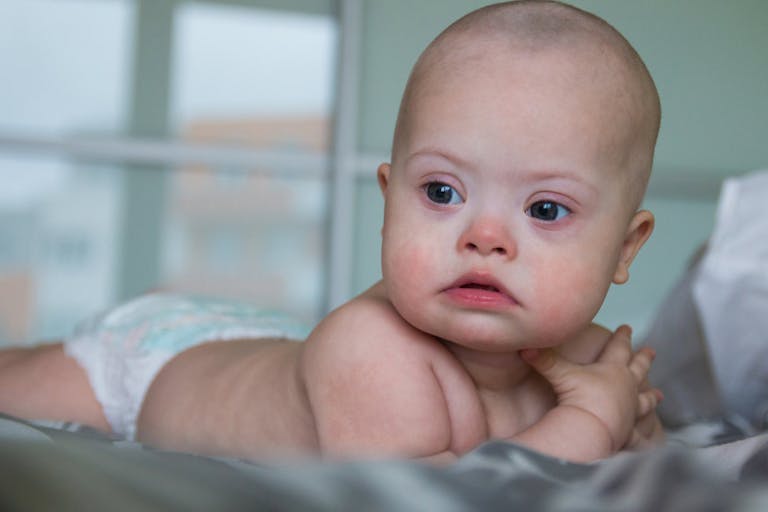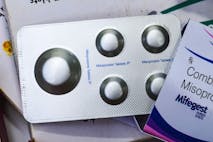
Great-grandmother charged with attempted murder of disabled teen
Cassy Cooke
·
International·By Nancy Flanders
Researchers say they eliminated the extra chromosome in cells with Down syndrome
Japanese scientist have reportedly removed the extra chromosome that causes Down syndrome from both lab cells and the skin cells of individuals living with the condition. This announcement reignites the debate: is this a scientific breakthrough, an act of eugenics, or both?
Researchers in Japan used CRISPR-Cas9 technology to ‘cut’ the extra chromosome out of lab-grown cells and skin cells.
CRISPR has been used to treat an infant with a potentially deadly genetic condition and could be used to improve the health of individuals with Down syndrome.
Embryos with Down syndrome are often destroyed in labs, but could now be used in further CRISPR research — an ethical concern.
Japanese researchers from Mie University School of Medicine and Fujita Health University have genetically edited human cells with Down syndrome by removing the extra copy of the 21st chromosome. Down syndrome, also known as Trisomy 21, occurs when the child is created with a third copy of the 21st chromosome.
Dr. Ryotaro Hashizume led a team of scientists in using the controversial CRISPR-Cas9 technology to remove the extra chromosome. CRISPR cuts and alters DNA sequences in living cells using a guide RNA to direct the Cas9 enzyme to a specific location on the genome — in this case, the extra copy of the 21st chromosome.
According to reports, after eliminating the extra chromosome, the cells reverted to two chromosomes and showed reduced cellular stress and improvements in energy function.
In the study, CRISPR was also used on the skin cells of individuals with Down syndrome, and researchers believe that they have taken a step towards future regenerative therapies to improve organ function in born individuals with the condition.
In May 2025, it was announced that an infant with a rare genetic disorder had been successfully treated with a customized CRISPR gene editing therapy by doctors at the Children’s Hospital of Philadelphia (CHOP) and Penn Medicine.
Baby KJ was born with severe carbamoyl phosphate synthetase 1 (CPS1) deficiency, an inherited disorder that prevents the body from breaking down ammonia, causing neurological damage. About half of those who have it will die in early infancy. KJ received the first dose of therapy in February, when he was seven months old, and a second dose at eight months. He is said to be doing well.
This proves that there is potential for CRISPR to be used to help people with Down syndrome live longer and healthier lives — but there is also a potentially unethical and eugenic motive involved as well.
Lab-created embryos used for IVF — who have been tested for Down syndrome using preimplantation genetic testing for aneuploidy — are typically destroyed, donated, or frozen indefinitely. And even if the embryo is “accidentally” implanted, chances are those babies will be aborted.
It is unlikely that parents would use CRISPR on their embryonic children, but they may donate those children to be used for CRISPR research. This would involve studying the effects of CRISPR on living human beings in their most vulnerable state with the intention of ultimately destroying them.
In addition, even if the intent were not to destroy the embryos but to implant them and let them grow, when CRISPR was used on human embryos in a previous study, scientists found that it led to unintended changes.
That study, which sought to repair a gene in human embryos that causes hereditary blindness, led to the elimination of an entire chromosome or large sections of DNA. About half of the embryos lost large segments of the chromosome where the mutation was located.

Beyond the lab, Down syndrome itself is not a life-threatening condition, which has led people to wonder why CRISPR would be used, unless it were done so with a eugenic means: to eliminate people with Down syndrome by making them completely different people than they otherwise would have been with the extra chromosome.
It’s impossible to predict at this point if CRISPR will ever be used successfully in this way. But while Down syndrome is not life-threatening on its own, there is an increased risk of life-threatening conditions for those who have it, including an increased risk of heart conditions and cancer.
Could CRISPR be used to decrease or eliminate those risks altogether, allowing those with Down syndrome to lead longer and healthier lives?
If the only intention is to find new ways to eliminate people with Down syndrome, then no good can come of this research. Editing embryos to make them into completely different people (or with the sole intention of destroying them later) is unethical, without question.
The only ethical use of CRISPR is to help people living with genetic conditions to live longer and healthier lives.
Follow Live Action News on Facebook and Instagram for more pro-life news.
Live Action News is pro-life news and commentary from a pro-life perspective.
Contact editor@liveaction.org for questions, corrections, or if you are seeking permission to reprint any Live Action News content.
Guest Articles: To submit a guest article to Live Action News, email editor@liveaction.org with an attached Word document of 800-1000 words. Please also attach any photos relevant to your submission if applicable. If your submission is accepted for publication, you will be notified within three weeks. Guest articles are not compensated (see our Open License Agreement). Thank you for your interest in Live Action News!

Cassy Cooke
·
Politics
Nancy Flanders
·
Politics
Rebecca Oas, Ph.D.
·
Abortion Pill
Angeline Tan
·
International
Bridget Sielicki
·
International
Angeline Tan
·
Pop Culture
Nancy Flanders
·
Politics
Nancy Flanders
·
Politics
Nancy Flanders
·
Abortion Pill
Nancy Flanders
·
Politics
Nancy Flanders
·